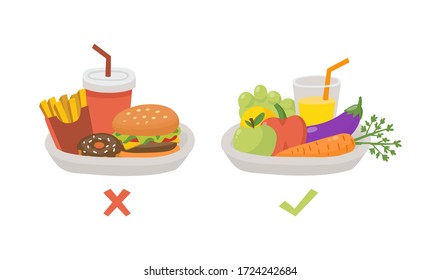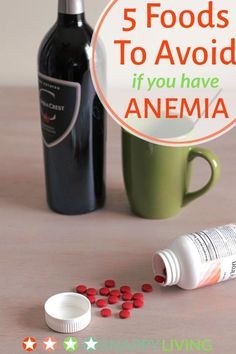
A great list of fruits for IBS includes the ones with high fibre content. High fructose levels are a common cause behind abdominal pain. Fruits such as bananas, citrus, berries and dried fruits are low in fructose. Cruciferous vegetables, such as cauliflower and broccoli, contain high levels of sulfur. If you have IBS, it is best to avoid onions.
IBS sufferers will not like oranges because they contain high levels of citric acids, which can be irritating. Kiwis, however, are much more suitable for IBS because they contain a lot less sugar than oranges. The good source of Vitamin C is also found in apples and strawberries, but they are high in fructose. This can trigger IBS flare ups.
Fruits with high fiber content are better. These fruits are high in insoluble fiber which can irritate the IBS intestine. Additionally, peeling fruits can reduce symptoms flare-ups. There are many types of fruit that are suitable for those with IBS, so you can find the ones that are good for you. They can be a good source of vitamins or minerals.

Passion fruit is a good source of soluble fiber, and can be eaten in moderation. It should be eaten in moderation along with other fruits high in soluble fiber. Fruits rich in fructan or FODMAPs can also be found. Monash University FODMAP apps can help you determine the amount of fiber in various fruits. If you like fennel, consider adding some of its seeds to your diet. This can help with constipation.
IBS symptoms can be aggravated by soda, high fructose corn syrup, and sodas. These are just a few of the many fibers found in fruit, which is high in soluble fibers. IBS patients will find bananas, raisin, and other fruits to be especially beneficial. They are both high in soluble fiber and can help ease constipation and bowel symptoms. You can try a small amount each of these foods to get an idea of which ones are best. Once you know which foods work best for you, it's time to start trying them.
Apple is a great fruit for people with irritable bowel syndrome. The fiber and vitamins in apple juice help with digestion. Apple juice can help maintain a healthy gut. Cumin herb is also useful for IBS sufferers. It has anti-inflammatory as well as antioxidant properties. Its seeds possess anti-inflammatory properties and carminative abilities. Moreover, cumin seeds are a great source of dietary fiber and are also good for irritable bowels.
Another option is to choose a fruit that can be used for ibs. Apples are high in fiber and contain vitamins that keep the digestive system healthy. Having an apple daily can help ease the symptoms of irritable bowel syndrome. The seeds of cumin can also help relieve the symptoms of irritable bowel syndrome and help you control your symptoms. So, apples can be an excellent choice for you to eat for ibs sufferers.

Fruits are not only rich in fiber but also contain vitamins and minerals. Avoid sweets and other commercial snacks that are high in fructose. You can keep track of your food intake to help you identify which foods you should avoid and which foods you should eat. Consult your doctor before you start introducing new foods if you aren’t sure what foods are triggering symptoms.
People with IBS should eat a diet rich in fruits and vegetables. However, it is best to avoid foods high in fructose. These foods can cause IBS symptoms to worsen by high fructose levels. Avoid foods high in fructoses such as processed foods and soft drinks. You will not feel worse if your symptoms aren't aggravated by a low-fructose fruit.
IBS is best when the fruits are easy to digest. Blueberries, for instance, are a great source dietary fiber. Blueberries can be eaten raw for improved digestion. They are also rich in vitamins and minerals. Always eat fruits and veggies to prevent ibs
para: Fennel seeds, peppermint and other fruits that are good for the ibs have an anti-inflammatory effect. They are full of dietary fiber, antioxidants, and other nutrients.
FAQ
How much should my body weight be for my height? BMI calculator & chart
Calculating your body mass index (BMI), is the best method to calculate how much weight to lose. A healthy BMI range is between 18.5 and 24.9. Weight loss is possible if you aim to lose approximately 10 pounds per week. Enter your height in the BMI calculator.
To see if you're overweight or obese, check out this BMI chart.
How do you get enough vitamins?
Your diet can provide most of your daily requirements. Supplements may be necessary if you are not getting enough of a particular vitamin. You can purchase a multivitamin that includes all of the vitamins you need. You can also buy individual vitamins in your local drugstore.
Talk to your doctor if there are any concerns about getting enough nutrients. Some examples of rich sources of vitamins E and K include dark green leafy vegetables, such as spinach.
Ask your doctor if there is any doubt about how much vitamin you should be taking. He or she will recommend the appropriate dosage based on your medical history and current health status.
How often should I exercise
Exercise is essential for maintaining a healthy lifestyle. There is no set time limit for exercising. It is important to find something that you enjoy and stay with it.
When you exercise three times per week, aim for 20-30 minutes moderate intensity. Moderate intensity is when you still have to breathe hard after the workout. This type is good for burning around 300 calories.
Walking is a great option if you are a keen walker. You can do 10-minute walks four days per week. Walking is low in impact and easy for your joints.
If you'd rather run, try jogging for 15 minutes three times a week. Running is a great way of burning calories and building muscle tone.
You can start slow if you're new to exercise. Start with just 5 minutes of cardio a few times a week. Gradually increase your cardio time until you reach the goal.
What's the difference between a virus & a bacterium?
A virus, a microscopic organism, is incapable of reproducing outside its host cell. A bacterium is an organism that splits itself in two. Viruses are small, around 20 nanometers in size. Bacteria are much larger, at 1 micron.
Viruses are usually spread through contact with infected bodily fluids, including saliva, urine, semen, vaginal secretions, pus, and feces. Bacteria are usually spread through direct contact with contaminated objects or surfaces.
Viruses may enter the body through cuts, scrapes. bites, or any other break in the skin. They may also enter through the nose, mouth, eyes, ears, vagina, rectum , or anus.
Bacteria can enter the body through wounds. They may also come into our bodies through food, water, air, soil, dust, or animals.
Viruses and bacteria both cause illness. But viruses can't multiply within their hosts. They only cause disease when they infect living tissue.
Bacteria can grow in their hosts and cause disease. They can spread to other parts of our bodies. Antibiotics are needed to eliminate them.
Do I need calories to count?
You might wonder, "What's the best diet for me?" or "is counting calories necessary?" The answer to this question depends on many factors, including your current health, your personal goals and preferences, as well as your overall lifestyle.
The Best Diet - Which One Is Right To You?
The best diet for me depends on my current health status, my personal goals, my preferences, and my overall lifestyle. There are many different diets, some good and some not so good. Some diets work for some people, while others are not. So what should I do? How can I make the best decision?
These are the main questions addressed by this article. The article starts by introducing the many types of diets currently available. Next, we'll discuss the pros and cons for each type of diet. We'll then discuss how to choose which one is best for you.
Let's first take a look at different diets.
Diet Types
There are three main types: low-fat, high-protein, or ketogenic. Let's look at each one briefly.
Low Fat Diets
A low-fat diet reduces the amount of fats you eat. This is achieved through reducing intakes of saturated fats (butter and cream cheese, for example). These fats can be replaced with unsaturated fats like avocados and olive oil. People who are looking to lose weight quickly and easily will benefit from a low-fat diet. This diet can cause problems such constipation as heartburn, indigestion, and even stomach pain. If a person doesn’t receive enough vitamins from their foods, this can lead to vitamin deficiency.
High Protein Diets
High protein diets discourage carbohydrates and encourage the use of proteins. These diets have higher protein levels than other diets. They are meant to help build muscle mass and burn more calories. The downside is that they may not provide adequate nutrition for someone who needs to eat regularly. They are not suitable for all people because they can be restrictive.
Ketogenic Diets
Ketogenic diets are also known as keto diets. They are high in fat, moderately high in protein and low in carbohydrates. They are typically used by athletes and bodybuilders because they allow them to train harder and longer without getting tired. To avoid side effects such as fatigue, nausea, headaches, or other unpleasant side effects, you must strictly adhere to their instructions.
What is the problem with BMI?
BMI is the acronym for Body Mass Index. It measures body fat based upon height and weight. BMI is calculated using the following formula:
Weight in kilograms divided with height in meters.
The score is expressed as a number between 0 and 25. Scores of 18.5 and higher indicate overweight, while scores of 23 and higher indicate obesity.
A person who weighs 100 kg and has a height of 1.75 m will have a BMI of 22.
What is the working principle of an antibiotic?
Antibiotics are medications that kill harmful bacteria. To treat bacterial infections, antibiotics are used. There are many options for antibiotics. Some are given orally, while some are injected. Other antibiotics are applied topically.
People who have been exposed are often given antibiotics. To prevent shingles, an oral antibiotic may be prescribed to someone who has had chicken pox. An injection of penicillin may be necessary to prevent pneumonia if someone has strep.
Doctors should prescribe antibiotics to children. Children are at greater risk than adults for developing serious side effects from taking antibiotics.
Diarrhea, the most common side-effect of antibiotics, is probably diarrhea. Other side effects possible include dizziness, nausea, vomiting, stomach cramps, dizziness and allergic reactions. These side effects are usually gone once the treatment is complete.
Statistics
- nutrients.[17]X Research sourceWhole grains to try include: 100% whole wheat pasta and bread, brown rice, whole grain oats, farro, millet, quinoa, and barley. (wikihow.com)
- According to the 2020 Dietary Guidelines for Americans, a balanced diet high in fruits and vegetables, lean protein, low-fat dairy and whole grains is needed for optimal energy. (mayoclinichealthsystem.org)
- WHO recommends reducing saturated fats to less than 10% of total energy intake; reducing trans-fats to less than 1% of total energy intake; and replacing both saturated fats and trans-fats to unsaturated fats. (who.int)
- The Dietary Guidelines for Americans recommend keeping added sugar intake below 10% of your daily calorie intake, while the World Health Organization recommends slashing added sugars to 5% or less of your daily calories for optimal health (59Trusted (healthline.com)
External Links
How To
27 Steps to a healthy life when your family eats only junk food
Cooking at home is the most popular way to eat healthier. But, it can be hard to make healthy meals because many people don't know how. This article will give you some tips on how to make healthier choices when eating out.
-
Consider eating at restaurants that serve healthy meals.
-
Before you order any meat dishes, make sure to order salads or vegetables.
-
Ask for sauces made without sugar.
-
Avoid fried foods.
-
Choose grilled meats over fried.
-
If you don't really need dessert, do not order it.
-
After dinner, make sure you have something to eat.
-
Take your time and chew slowly.
-
Drink plenty of water while eating.
-
You should not skip breakfast or lunch.
-
Every meal should include fruit and vegetables.
-
Consume milk and not soda.
-
Sugary drinks are best avoided.
-
Limit the amount of salt in your diet.
-
You should limit how often you visit fast food restaurants.
-
Ask someone to join if temptation is too much.
-
Do not let your kids watch too much TV.
-
Turn off the television during meals.
-
Avoid energy drinks
-
Take regular breaks from work.
-
Get up at a reasonable hour and do some exercise.
-
Move every day.
-
Start small, and work your way up.
-
Realistic goals are important.
-
Be patient.
-
Even if you don’t feel like it, find the time to exercise.
-
Use positive thinking.